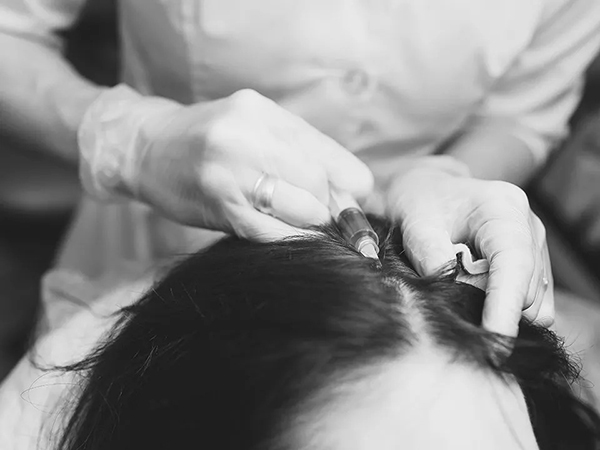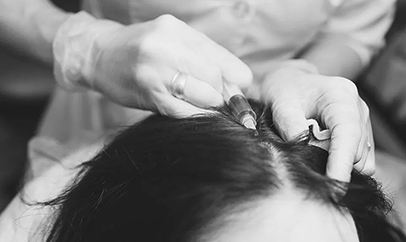
Hair transplant is a procedure that employs the expertise of plastic or dermatological surgeon. In this procedure, the surgeon moves hair, usually from the back or sides of the head to the top or front of the head.
Before delving into hair transplant and its methods, let’s examine the hair and some of its functions.
Hair contains a protein called Keratin. A hair strand has two parts; follicle and shaft. The follicle its root is located beneath the scalp and is the point of hair regrowth. At the same time, the shaft is the visible part that extends above the skin surface.
The hair is multifunctional in its purposes. While it beautifies the face and acts as a medium for us to express our style, its biological function serves as a cushion for the skull. Hair loss results due to Pattern baldness, improper diet, medication, hormonal imbalance or illness, and hair transplant helps remedy hair loss.
Hair Transplant; Which Procedure Is Ideal?
This is one question everybody, considering the process asks. There is no straight answer to this question, as the perfect method is dependent on the individual and type of hair loss experience.
Hair Transplant Methods
Irrespective of the procedure used for hair transplant, the result restores a receding hairline, and increases overall hair density. The two popular methods of hair transplant are;
- Follicular Unit Extraction (FUE)
- Follicular Unit Transplantation (FUT)
Let us examine both methods in detail to help you make better choices.
Follicular Unit Extraction
In this method of hair transplantation, Hair harvesting occurs through microscopic incisions into the scalp. The process involves taking individual follicular units from the scalp. The donor areas are less noticeable in this method as the surgeon harvests the follicles randomly.
There are two types of FUE, namely;
Manual FUE: Here, hair follicle extraction takes place in the watch of a qualified surgeon using an extraction device.
Robotic FUE: This process uses an artificial intelligence transplant device to harvest donor grafts from the scalp. This device is under the guidance of a surgeon. Using this robot offers unmatched accuracy in hair follicle extraction.
What are the benefits of using this method of extraction?
Benefits of Using Follicular Unit Extraction
- Quality Graft: The surgeon selects the best graft for a successful transplant and harvest process. Graft selection depends on the health and strength of the follicle.
- Transplanted hair appears natural: This process extracts and transplants hair in their groups naturally. This ensures no visible scar remains after the procedure, allowing you to rock short hair as much as you want.
- Zero pain: The Follicular Unit Extraction method uses local anesthesia to ensure you remain comfortable through the procedure.
- Minimal Recovery Time: This procedure takes about 6-9 hours from start to finish. Recovery from FUE transplant is fast as there is no scalpel cut or stitch to heal.
- The scar on the scalp is minimal: This procedure is ideal for people that like to rock short hair. This is because the original donor areas (Hair sides and back) appear the same, with a similar density before graft extraction.
Follicular Unit Transplantation
This process, commonly referred to as the strip method involves removing a thin piece of hair tissue from the scalp (usually at the back). Doctors take Units of follicles from this strip through the use of stereo-microscopic removal and dissection.
This process leaves a linear scar at the back of the head after the wound closes.
Benefits of Follicular Unit Transplantation
- Quick recovery time: This process has a recovery time between 10 to 12 days. This duration could extend in some cases due to swelling on the scalp where the doctors take the hair strip.
- High Follicle survival rate: Hair harvesting in this process occurs in the middle of the significant donation zone, where hair density is thicker. This process harvests the follicle carefully, ensuring it remains intact, and this improves its survival rate.
- Natural Appearance: True, this procedure leaves a scar, but this scar is less than 0.5mm to about 1 mm in diameter. This makes sure you can cover it with surrounding hair. Also, hair transplant here occurs in groups of 1 -3 or 4 strands, which gives the hair a uniform appearance.
- Scarring in FUT occurs once: Unlike FUE, which leaves a round scar after where around scar is left behind with each harvest, the FUT leaves just one scar, irrespective of how many sessions you undergo.
Factors to Consider When Choosing a Hair Transplant Procedure
- Preferred hair length: How you like your hair length should be the main factor to consider when selecting a procedure. If you want your hair long, then both methods are favorable as long hair covers scars. On the flip side, if you favor short hair length, then FUE might be the ideal procedure for you, as the scars are minimal.
- Budget: Although the cost of both procedures is dependent on the surgeon, FUT is generally not as expensive as the FUE.
- Success Rate: The FUT and FUE success rate depends on the medical team’s experience performing the transplant. Both processes have a success rate of over 90%. It is important to note that you consult a professional for advice on the best method for you before choosing a hair transplantation procedure.
How to Take Care of Hair after Transplant
The following self-care steps are necessary to reduce the recovery period and achieve optimal results from a hair transplant surgery.
- Do not leave the grafted area dry: Dehydration of grafted follicle might unravel the whole hair transplant process. The graft should remain moist to ensure proper bedding of the newly transplanted hair follicles. Application of ointments like Aquaporin and misting graft with saline solution helps keep it moist.
- Minimize irritation and swelling: Cleaning the scalp frequently would reduce irritation in the form of itching. It is also advisable you sleep at an angle of 45 degrees for the first three nights after the procedure. This is to ensure minimal fluid movement down the forehead, thereby reducing swelling.
- Do not engage in rigorous exercises after transplant: While sweating does not damage new transplants, exerting yourself soon after transplant might increase pain and swelling. It is advisable to commence activities after the 7 to 10 days recovery period gradually.
Conclusion
The following tips will prepare your mind on what to watch out for when seeking to carry out a hair transplant procedure. It is important you seek professional advice on the best hair transplant procedure for you and how to restore your hair. Do you have any experience you would love to share? Let other readers know in the comment section below!


